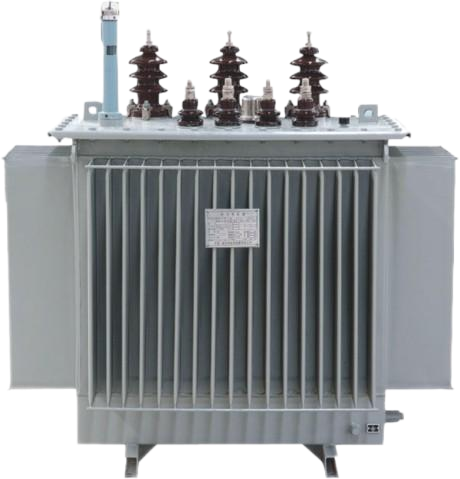 English
English Español
Español  Português
Português  русский
русский  Français
Français  日本語
日本語  Deutsch
Deutsch  tiếng Việt
tiếng Việt  Italiano
Italiano  Nederlands
Nederlands  ภาษาไทย
ภาษาไทย  Polski
Polski  한국어
한국어  Svenska
Svenska  magyar
magyar  Malay
Malay  বাংলা ভাষার
বাংলা ভাষার  Dansk
Dansk  Suomi
Suomi  हिन्दी
हिन्दी  Pilipino
Pilipino  Türkçe
Türkçe  Gaeilge
Gaeilge  العربية
العربية  Indonesia
Indonesia  Norsk
Norsk  تمل
تمل  český
český  ελληνικά
ελληνικά  український
український  Javanese
Javanese  فارسی
فارسی  தமிழ்
தமிழ்  తెలుగు
తెలుగు  नेपाली
नेपाली  Burmese
Burmese  български
български  ລາວ
ລາວ  Latine
Latine  Қазақша
Қазақша  Euskal
Euskal  Azərbaycan
Azərbaycan  Slovenský jazyk
Slovenský jazyk  Македонски
Македонски  Lietuvos
Lietuvos  Eesti Keel
Eesti Keel  Română
Română  Slovenski
Slovenski  मराठी
मराठी  Srpski језик
Srpski језик
Differences between dry-type transformers and oil-immersed transformers
2024-01-11
Transformer is an electrical equipment used for power conversion. It is an indispensable and important device in the power grid. It can convert AC power of one voltage and current into AC power of another voltage and current of the same frequency. It can be almost anywhere in the world. Transformers are used in all electronic products. According to the number of phases, there are two types: single-phase and three-phase. If divided according to the cooling method, it can be divided into dry-type transformers and oil-immersed transformers. The former uses transformer oil (of course there are other oils such as beta oil) as the cooling and insulating medium, while the latter uses air or other gases such as SF6 etc. are used as cooling medium. The oil transformer places the body composed of the iron core and windings in a tank filled with transformer oil. Dry transformers usually encapsulate the core and windings with epoxy resin. There is also a non-encapsulated type that is more commonly used now. The windings are impregnated with special insulating paper and then impregnated with special insulating paint to prevent the windings or iron from being damaged. The core is damp. Today let’s talk about the differences between these two transformers in detail.
External structure
The oil-immersed transformer has a shell, and the inside of the shell is transformer oil. The coils of the transformer are soaked in the oil. The coils of the transformer cannot be seen from the outside; while dry-type transformers have no oil, so there is no need for a shell, and they can be seen directly. The coil of the transformer; another feature is that the oil-immersed transformer has an oil pillow on it, and the transformer oil is stored inside. But now new oil-immersed transformers are also produced without oil pillows; the immersed transformer is for the convenience of heat dissipation, that is, for the internal The flow of insulating oil is convenient for heat dissipation. A radiator is designed on the outside, just like a heat sink. However, dry-type transformers do not have this radiator. The heat dissipation relies on a fan under the transformer coil. This fan is a bit like the indoor unit of a household air conditioner. Most dry-type transformers use silicone rubber bushings, while most oil-type transformers use porcelain bushings.
Different capacities and voltages
Dry-type transformers are generally suitable for power distribution. Most of the capacities are below 1600KVA and the voltage is below 10KV. Some of them can reach 35KV voltage level. However, oil-type transformers can have full capacity from small to large and all voltage levels. Voltage. Generally, dry-type transformers should operate at rated capacity, while oil-type transformers have better overload capabilities.
Price
For transformers of the same capacity, the purchase price of dry-type transformers is much higher than that of oil-type transformers. Dry-type transformer models generally start with SC (epoxy resin cast encapsulated type), SCR (non-epoxy resin cast solid insulation encapsulated type), SG (open type).
Placement
Dry-type transformers are mainly used in places that require "fire protection and explosion-proof", and are generally easy to use in large buildings and high-rise buildings; while oil-type transformers may spray or leak oil after an "accident", causing fires, and are mainly used outdoors. And there is a place to set up an "accident oil pool" on site.
In short, oil-type and dry-type transformers each have their own advantages and disadvantages. Oil-type transformers are low-cost and easy to maintain, but they are flammable and explosive. Due to its good fire resistance, dry transformers can be installed in load center areas to reduce voltage loss and power loss. However, dry conversion is expensive, bulky, has poor moisture and dust resistance, and is noisy.Actually,the right product is the best.





